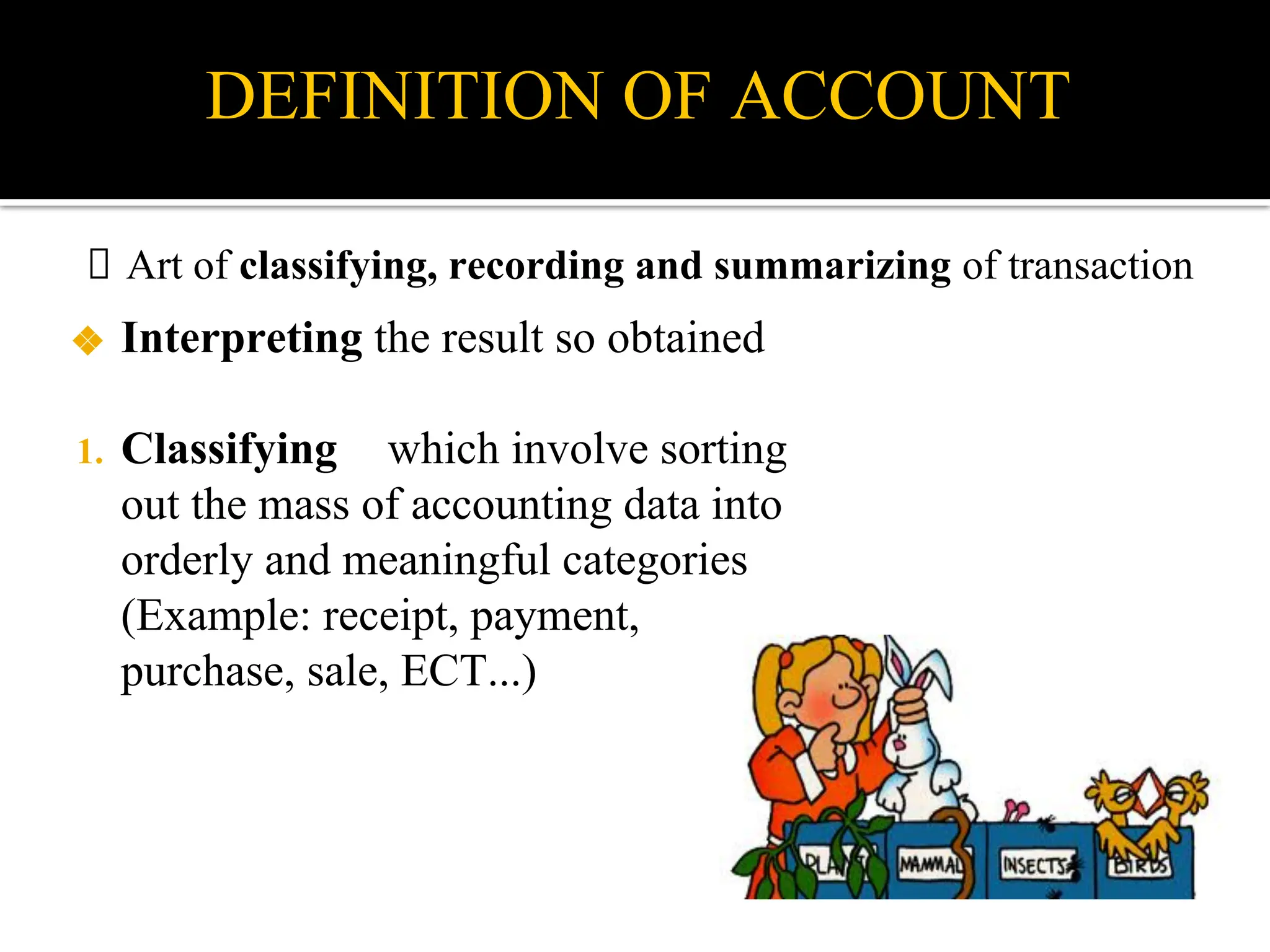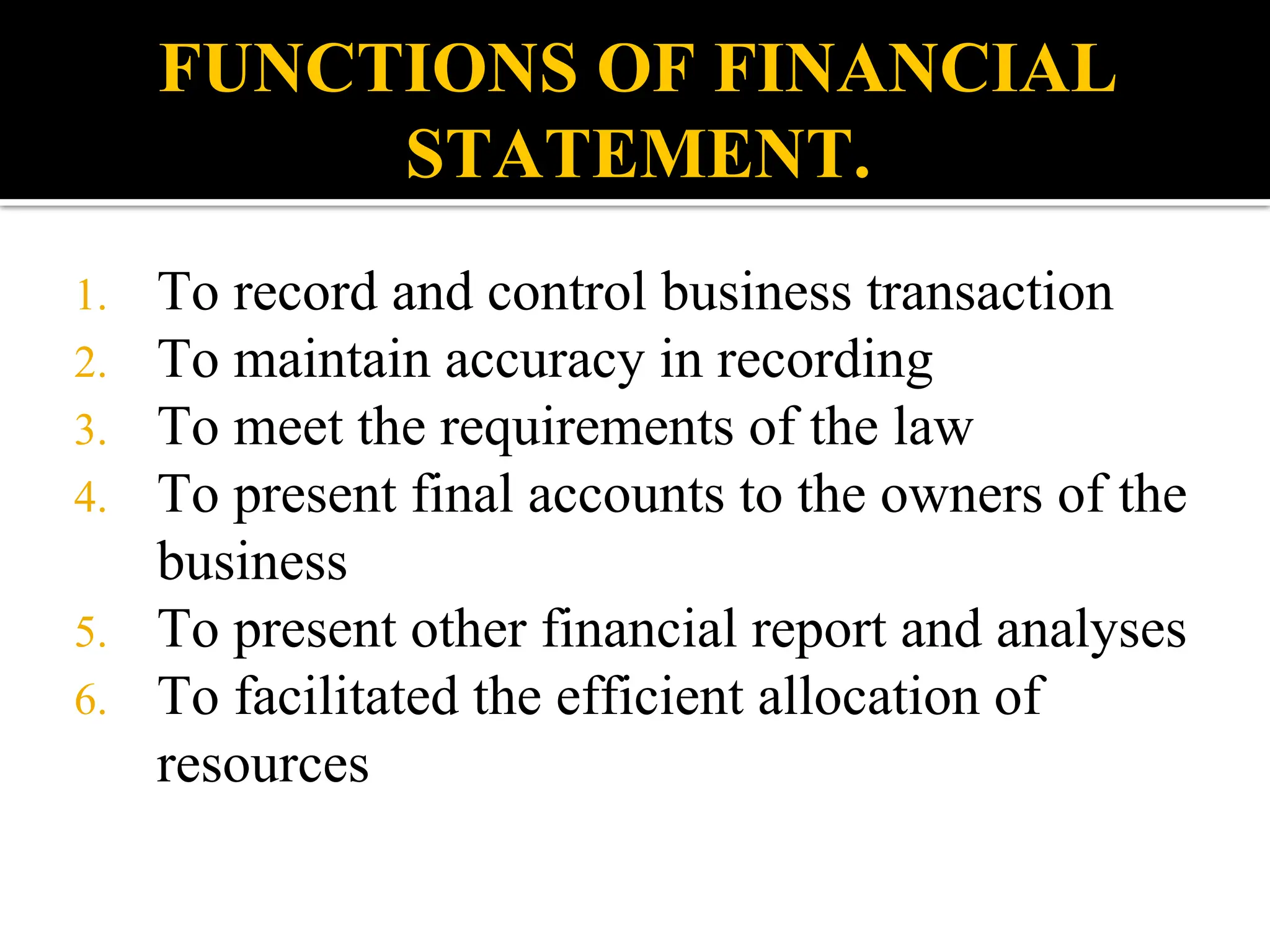Chapter 1 introduces accounting by defining key concepts like classifying, recording, and summarizing transactions, and discusses the accounting cycle's role in generating financial statements for decision-making. It distinguishes between internal users (owners, managers, employees) and external users (creditors, investors, government) of financial statements and outlines their specific informational needs. Additionally, the chapter describes various types of business organizations, including sole proprietorships, partnerships, and companies, noting their unique characteristics and formation processes.














